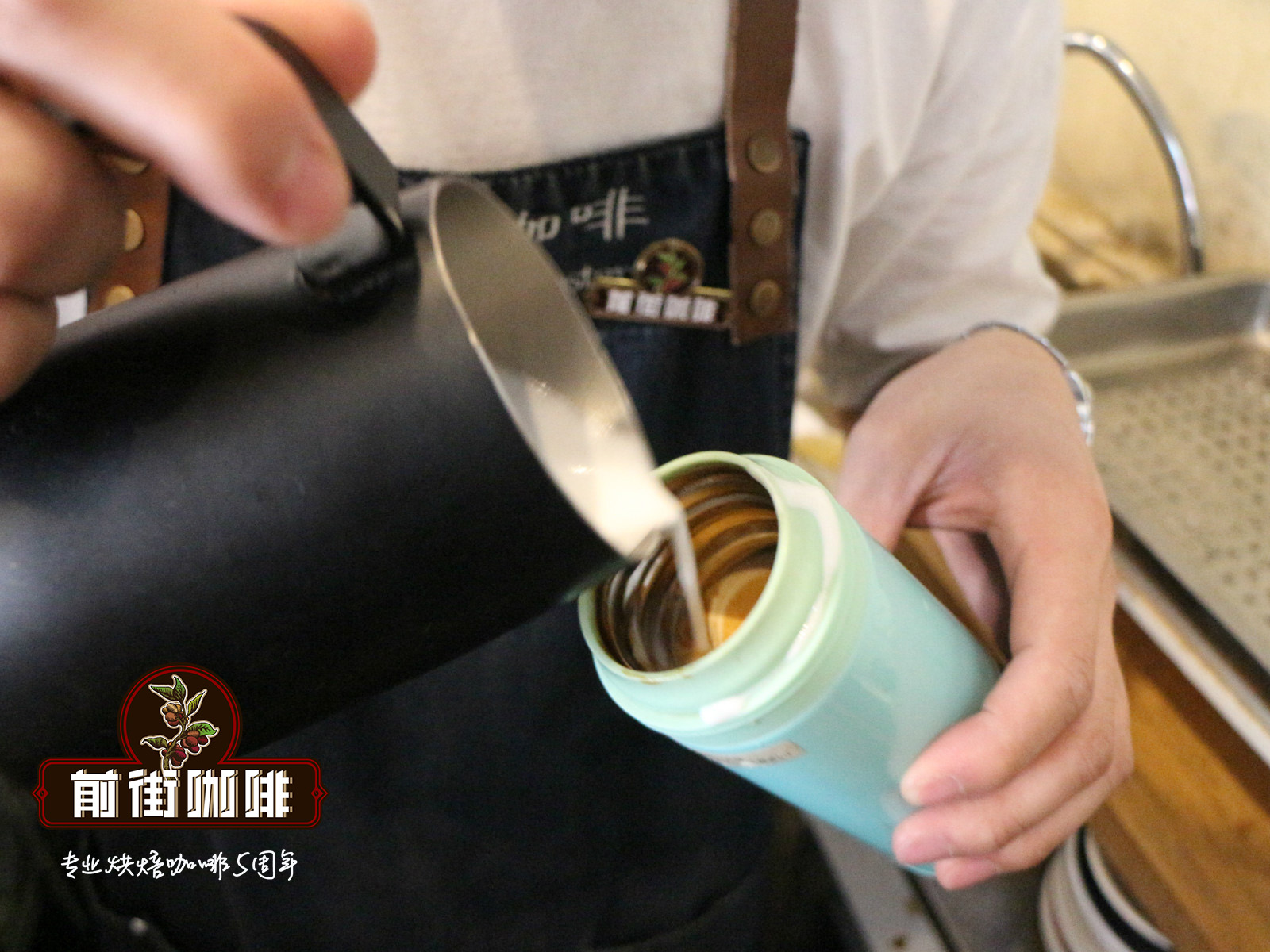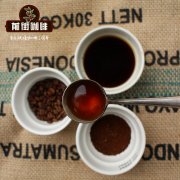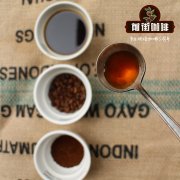Can I add pure milk or reduced milk in the coffee? Can you drink coffee with milk powder?

Professional coffee knowledge exchange more coffee bean information please follow the coffee workshop (Wechat official account cafe_style)
Can I have coffee with milk?
Misunderstanding 1. Reduced milk or business milk is a milk drink, not 100% milk.
But why can only milk beverages be marked with reduced milk? Does this mean that the milk is not 100% milk? No, this is the rule of the law, because concentrated milk is reduced with water plus concentrated milk or milk powder, so dairy products cannot account for 100% of the raw materials of this product, so according to the CNS standard: "refers to the reduction of milk powder or concentrated milk to the same proportion as the original fresh milk, and accounts for more than 50% of the total content", even if the manufacturer reduces to the appearance of the original milk (the so-called 100% reduction). It should also be marked as a dairy drink.
Misunderstanding 2. Reducing milk has high milk fat and is harmful to health.
First of all, I would like to ask: since "fresh milk tea" and "matcha latte" are drinks, manufacturers should mainly pay attention to whether they are good or not. So beverage shops or coffee shops can choose which kind of "fresh milk" to use according to their own product design, or use "business milk" with high milk fat content, so as to make their drinks more palatable and tasty, this is the goal.
Of course, because milk essence is unhealthy, many people will switch from milk tea to "fresh milk tea" and "latte". They think that drinking these drinks has higher health value, and manufacturers may also widely publicize the benefits of "fresh milk tea" and "xx latte". This is one of the controversial points of reduced milk. It was originally believed that fresh milk is low in milk fat, but the milk fat in special milk is higher, which may lead to health risks of fat intake. Regardless of the controversy over the hazards of grease itself to human health, I would like to make some comments on the use of milk for business.
I think this is caused by the lack of popularity of food education among the public or manufacturers, the misuse of names by manufacturers (of course, there will also be knowledge, and the occurrence of use), conventional misperceptions and excessive consumer expectations.
First of all, the milk for business use does not necessarily have a particularly high milk fat content. Referring to the photo above, City Cafe's special milk for coffee is marked as a milk drink, but the milk fat content is consistent with the standard of whole milk, and the protein is also higher than 3.0%. This means that the quality of this special milk is not much different from that of ordinary fresh milk, but the unified Mizuho fresh milk is sterilized in the country, so it can be marked as fresh milk. But City Cafe's special milk is reduced milk, can not be marked as fresh milk for sale, just two product lines.
In addition, some names are established by convention, is it better to rename fresh milk tea to milk tea party? In addition, our impression of lattes should use fresh milk, but lattes should be defined as drinks of milk and espresso. If you want to follow the labeling principles of the Ministry of Health, if the store uses reduced milk, it should be marked as espresso milk. If fresh milk is used, it should be called espresso seasoning milk. Can consumers understand this sign?
Most of the time, it's just a convention, and excessive pursuit is nitpicking. With regard to the problem between low cost and high price, we should not only look at the cost of raw materials, because the structure of the price is not only the cost of raw materials, brand image, packaging design, and so on, but there is room for discussion.
The additive of reducing milk is harmful to health is fear marketing.
Articles criticizing reduced milk mention many additives of reduced milk and sell fear with some words:
"what is more worrying is that in order to 'homogenize' the taste of reducing milk, it is often legal to add carrageenan, which is considered by some scholars to have a health dispute, which may have an impact on the health of consumers."
Carrageenan is extracted from seaweed and used as thickening and stabilizing. The purpose of adding carrageenan to reduced milk is to avoid milk fat and milk delamination, which has nothing to do with homogenization, and it is a legal additive in Japan, the European Union and the United States. Relevant risk assessments have also been made. Some scholars think it is controversial because some studies have found that carrageenan may affect gastrointestinal flora. This in turn increases the risk of gastrointestinal inflammation (link), but back in real life, how does the added dose compare to the experimental dose? What's the frequency of ingestion? All these require a complete assessment report, and so far, carrageenan has not been recognized as a hazard problem.
"after the reduction, the taste is a little worse. Just imagine, when the fresh milk is cooked and cooled, the taste must be much worse, so you need to add milk fat and emulsifier to make it 'strong, mellow, and fragrant'!"
Boil the milk? There is no scientific support for this sentence. Originally, reporters should just want to criticize sterilization and regard sterilization as cooked, but they do not realize that this is the most important part of the milk process. Another article criticizing reduced milk reads as follows:
"because the ice brick milk is rapidly cooled to-30 degrees C, the speed of oil and water in fresh milk is different from that of water in the freezing and thawing process, resulting in the separation of oil and water. As long as it is frozen for more than 24 hours, the important nutrients of fresh milk, such as whey protein and milk fat, have been destroyed at least half!"
Doesn't this sentence contradict the addition of cream again? The addition of milk fat may be the original use of milk powder, the need to reduce enough milk fat. And the so-called emulsifier in the article, I think it refers to sodium casein, which belongs to the thickening agent in food additives, but the practical application only makes the quality of milk more stable and makes the taste closer to the appearance of the original milk. Casein is casein, there is already a lot of casein in milk, will casein have a serious impact?
A Facebook fan group mentioned that these ice brick milk will do harm to additives when making seasoning milk, and the sodium content of spices will also increase the risk of high blood pressure, but the sodium content in spices is very small, so it seems to be too much to take this minimal risk as a target without first reducing seasonings such as salt and soy sauce.
Finally, if the article is to discuss the cost of reducing imported ice brick milk or milk powder, the price is no different from fresh milk after the reduction is turned into a milk drink or given to a coffee shop or hand-shaken tea, then this is another topic. I also think that this can be discussed, and in the label can be more transparent, so that consumers know whether the "milk" used in the store is "fresh milk" or different "business milk" of milk fat. However, the news media or powder colleges should have a definite goal of discussion, and should not use pseudoscience and non-facts to package food safety, health and other fears in the topic of marketing, which is not conducive to food safety and knowledge transmission.
Important Notice :
前街咖啡 FrontStreet Coffee has moved to new addredd:
FrontStreet Coffee Address: 315,Donghua East Road,GuangZhou
Tel:020 38364473
- Prev

How to make coffee with pure milk? how to mix coffee with milk?
Professional coffee knowledge exchange more coffee bean information please follow the coffee workshop (Wechat official account cafe_style) Coffee and milk weather is so hot, the whole cup of cold drink is common sense, right? You can buy a cup of frozen Latte or frozen Cappuccino in a coffee shop. Do you have a coffee machine to order? This time, I will teach you to use Qianjie coffee and add the ingredients found by a few housing enterprises. it is so simple that you can make it disappear.
- Next

Is the daily latte really coffee with plain milk? Can you drink coffee with milk powder?
Professional coffee knowledge exchange more coffee bean information please follow the coffee workshop (Wechat official account cafe_style) do you drink lattes with coffee and milk? There is no doubt that you can make your own coffee and add your own milk, but if the supermarket clerk tells you it is to add fresh milk, will you believe it? It was a slip of the tongue. In fact, it must be fresh milk that was not packed in a carton. Used by the whole family
Related
- What is the meaning of lactic acid fermentation with coffee bean treatment?
- How to judge the state of foam by sound?
- How does the latte pull out the unicorn pattern? Come to get for a little trick to improve the flower pull!
- Will flower pulling affect the taste of the latte?
- Do you know the history of coffee?
- The difference between honey treatment and sun washing what is raisin honey treatment?
- What kind of milk can a novice use to make coffee foam to keep the foam longer? The correct method and skills of milking tutorial sharing
- Why do washed coffee beans taste sour? Flavor characteristics of washed Coffee
- Introduction to the skill of how to practice the size and height of water injection around the circle of hand-brewed coffee
- How do beginners practice coffee flower drawing from scratch?

